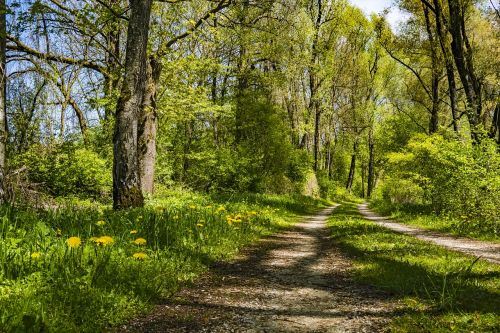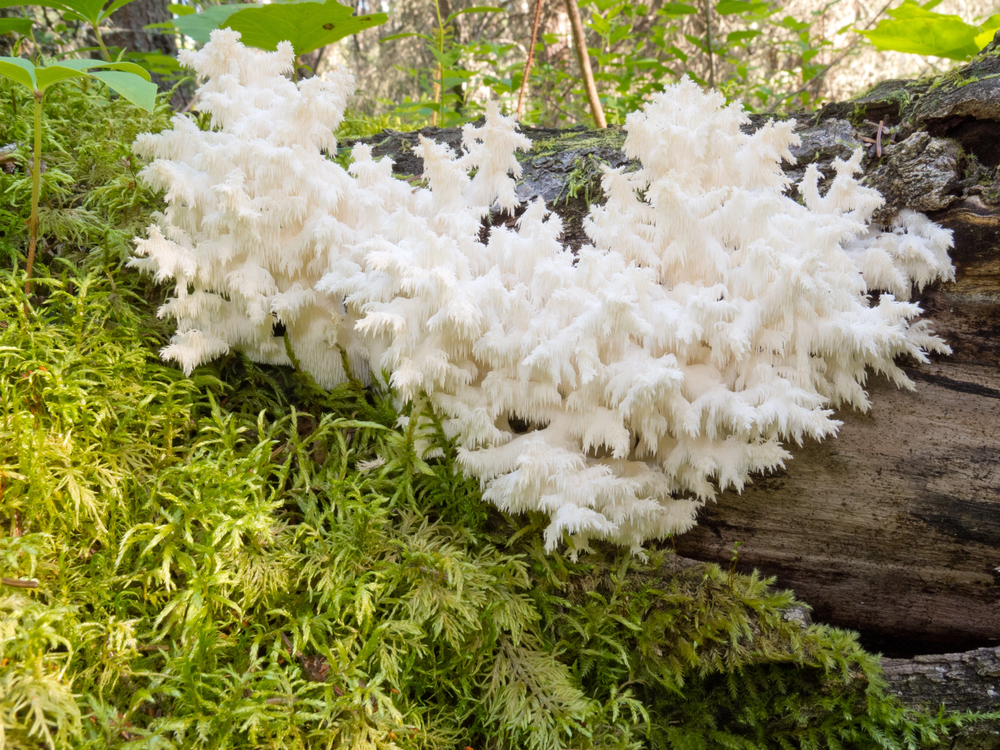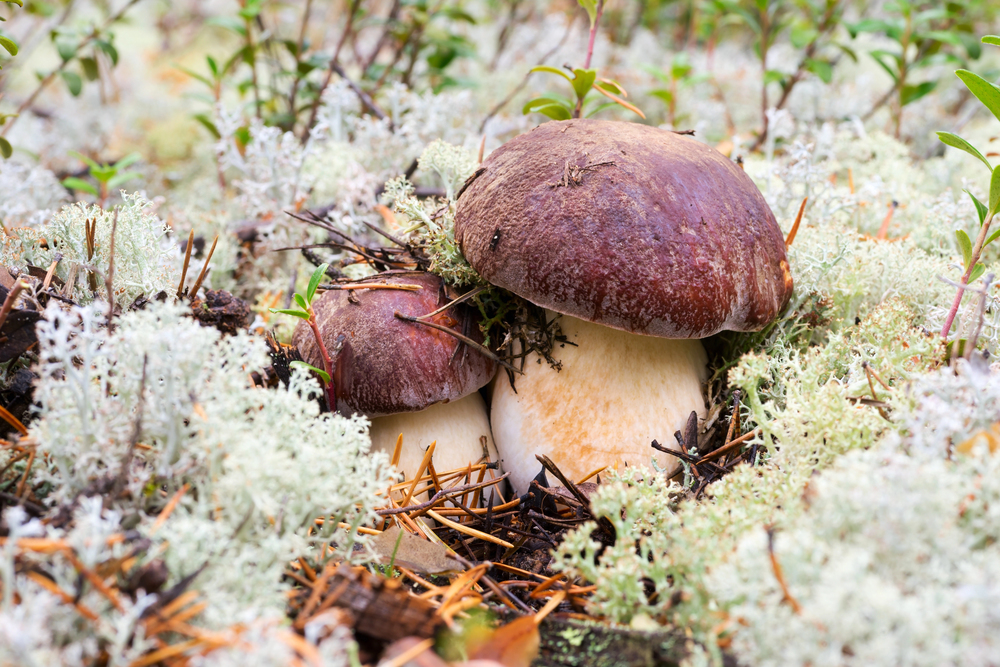Foraging for edible Parasol Mushrooms requires careful attention to their potential look-alikes, including the Shaggy parasol, False parasol, and certain Lepiota species, which can be toxic. Accurate identification of parasol fungi is essential to avoid serious health risks. Key distinguishing factors include cap size, spore print color, and gill characteristics.
Shaggy Parasol
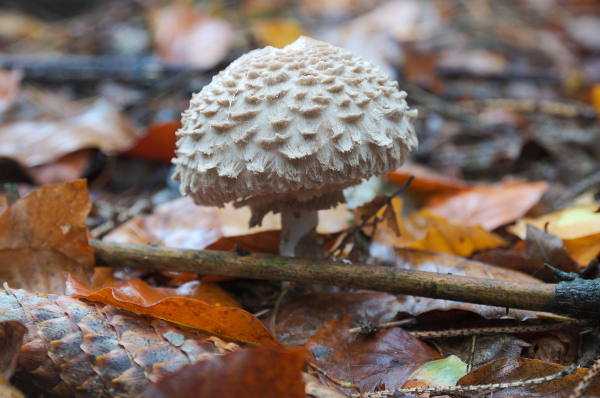
The Shaggy Parasol (Chlorophyllum rhacodes) differs from the Parasol Mushroom with its fibrous cap and lack of a snakeskin pattern on the stem. Thriving in woodland areas from late summer to autumn, it has a cap up to 20 cm wide, starting spherical and flattening with scales. Its free gills transition from white to cream to green. The robust stem features a double ring and may turn reddish when cut. While edible, caution is advised for potential allergic reactions.
False Parasol (Chlorophyllum molybdites)
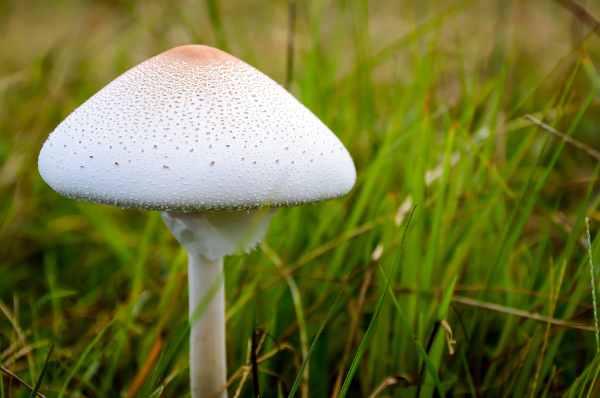
The false parasol – aka Green-spored parasol -, often confused with the true parasol mushroom, has unique physical traits vital for proper identification due to its toxicity. Distinguishing between the two is important for foragers to avoid potential health risks.
Identifying Physical Characteristics
The False Parasol is distinguished by its greenish spore print, setting it apart from the white-spored true Parasol Mushroom. Its cap can grow up to 30 cm, starting as a dome and flattening with a central bump, adorned with brownish scales. The free, white gills turn greenish with maturity. The white stalk, up to 15 cm tall, has a bulbous base and a thick, movable ring called an annulus. These physical features aid in accurate identification of the False Parasol.
Toxicity and Health Risks
Recognizing the physical characteristics of the False Parasol is essential due to its toxic nature. The False Parasol, scientifically known as Chlorophyllum molybdites, contains potent toxins that can cause severe gastrointestinal distress, including nausea, vomiting, diarrhea, and abdominal pain. These symptoms can be especially harmful to young children, the elderly, and individuals with weakened immune systems. To avoid the health risks associated with consuming the False Parasol:
- Identification: Differentiate the False Parasol from the edible Parasol mushroom by noting its greenish gills and white spore print, in contrast to the white gills and brown spore print of the true Parasol mushroom.
- Toxic Compounds: The False Parasol contains gastrointestinal irritants that can lead to dehydration and electrolyte imbalance, requiring prompt medical attention.
- Prevention: Use reliable identification methods and seek guidance from experts to distinguish between edible mushrooms and toxic varieties effectively.
Lepiota Species
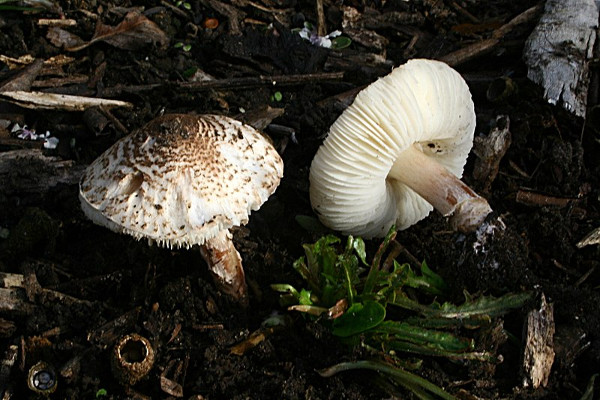
Some Lepiota species closely resemble the parasol mushroom, posing a challenge for accurate identification. Species like Lepiota brunneoincarnata and Lepiota helveola share similar features but can be highly toxic if consumed. Distinguishing features include a white spore print, non-color-changing gills, and a distinct odor when mature. Foragers must carefully study and verify these differences to ensure safe mushroom hunting experiences.
Amanita Mushrooms
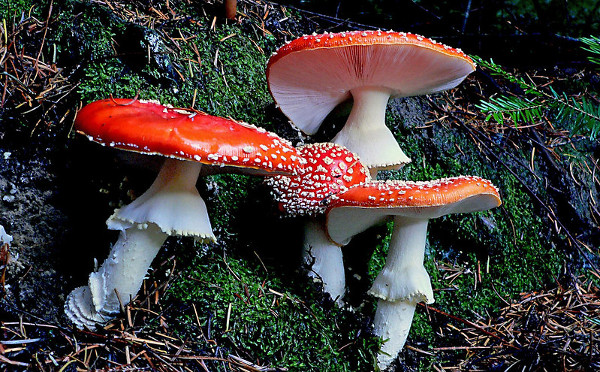
Amanita mushrooms, highly toxic if consumed, must be correctly identified to prevent serious harm. They can be found in similar habitats as parasol mushrooms, underscoring the importance of accurate recognition. Recognizing their unique characteristics is key to distinguishing them from safe-to-eat varieties.
Toxicity and Identification
Distinguishing parasol mushrooms from toxic Amanita species is essential for safe foraging. Amanitas like the death cap and destroying angel can be deadly if mistaken for parasol mushrooms. Here are three key identification points: Amanitas have a volva and annulus, white gills and spore print, and caps with smooth, warty, or veil remnants, while parasol mushrooms lack a volva, have white to cream gills and spore print, and textured, scaly caps.
Habitat and Distribution
Amanita species, thriving in diverse habitats like leafy and coniferous forests, form symbiotic relationships with trees. They are mainly mycorrhizal, benefiting from these partnerships to thrive in various environments, from mild woodlands to northern forests.
Amanita mushrooms have a global presence, notably in North America, Europe, Asia, and Australasia, adapting to different weather and soil conditions. Amanita muscaria, a well-known species, is commonly found in both hemispheres under birch, pine, and spruce trees.
Their seasonal behaviors vary, with many species fruiting in late summer to fall in temperate regions, while in tropical areas, they can be found year-round due to constant warmth and moisture.
The adaptability and widespread distribution of Amanita mushrooms make them intriguing in ecological studies. Accurate identification is necessary for foragers and mycologists due to the presence of potentially toxic look-alike species.

